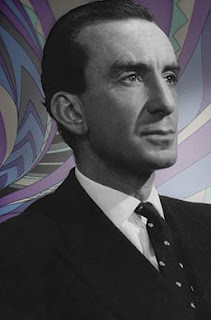Cousin of Italy's wartime monarch died in a POW camp
 |
| As Governor-General, the Duke of Aosta led the East Africa Campaign |
After distinguished military service in the First World War and seeing action as a pilot in the pacification of Italian Libya in the early 1930s, Amedeo had been appointed by Mussolini as Viceroy of Ethiopia and Governor-General of Italian East Africa in 1937, replacing the controversial Marshal Rodolfo Graziani.
Italy’s entry into the Second World War on the side of Germany in June 1940 meant the Duke of Aosta became the commander of the Italian forces against the British in what became known as the East African Campaign.
As such, he oversaw the Italian advances into the Sudan and Kenya and the Italian invasion of British Somaliland.
However, when the British launched a counter-invasion early the following year, the Italians were put on the defensive and after fighting desperately to protect their territory were beaten in the Battle of Keren. The rest of Eritrea, including the port of Massawa, fell soon afterwards.
 |
| Amedeo pictured with Umberto, Prince of Piedmont, the future King |
He was forced to surrender on May 18, his forces besieged by 9,000 British and Commonwealth troops and more than 20,000 Ethiopian irregulars, although their gallant resistance was noted by the British, who allowed them to lay down their arms with dignity.
The Duke was sent to a prison camp in Nairobi, Kenya but died there the following March, reportedly from complications caused by tuberculosis and malaria.
Born Amedeo Umberto Isabella Luigi Filippo Maria Giuseppe Giovanni di Savoia-Aosta, he was the third Duke of Aosta and a first cousin, once removed, of the King of Italy, Victor Emmanuel III.
His parents were Prince Emanuele Filiberto, second Duke of Aosta, and Princess Hélène, who was the daughter of Prince Philippe of Orléans. His great-grandfather was King Victor Emmanuel II of Italy, making him a member of the House of Savoy.
An exceptional tall man, standing at 6ft 6ins (1.98m), he towered over the king, who was barely 5ft 0ins (1.53m).
 |
| Prince Amedeo and Princess Anne of Orléans in the Piazza del Plebiscito in Naples on their wedding day |
He joined the Italian Royal Army after attending the Nunziatella military academy in Naples. He travelled widely in Africa after leaving the army in 1921, which gave him knowledge of the area he would later govern.
Widely known and respected for the gentlemanly way in which he conducted himself, Amedeo became Duke of Aosta on the death of his father
Count Galeazzo Ciano, Italian Foreign Minister under his father-in-law Mussolini, said that with the Duke's death “the image of a Prince and an Italian - simple in his ways, broad in outlook, and humane in spirit - died with him."
Emperor Haile Selassie of Ethiopia applauded the respect and care shown by the Duke to the exiled Emperor's personal property left behind in Addis Ababa.
Amedeo was married in November 1927 in Naples, to his first cousin HRH Princess Anne of Orléans (1906–1986). They had two daughters and although both married royal princes - Margherita married Robert, Archduke of Austria-Este and Maria Cristina wed Prince Casimir of Bourbon-Two Sicilies - the lack of a male heir to Amedeo meant the title Duke of Aosta passed to his younger brother, Aimone.
 |
| The Nunziatella complex in the Pizzofalcone district if Naples, near the city centre |
The Nunziatella Military School of Naples, founded in November 1787 under the name of Royal Military Academy, is the oldest military school in the world among those still operating. Located in Via Generale Parisi in Pizzofalcone, it takes its name from the adjacent church of the Santissima Annunziata. In addition to Prince Amedeo and King Vittorio Emanuele III, the alumni include one former director of the European Union military committee, two chiefs of defence staff, four army chiefs of staff, two navy chiefs of staff, one air chief of staff, two commanders general of the Guardia di Finanza and two commanders general of the Carabinieri, as well as three prime ministers.
 |
| The beautiful Castello di Miramare near Trieste, where Prince Amedeo's daughter Maria Christina was born |
Prince Amedeo’s younger daughter, Maria Christina of Savoy-Aosta, was born at the Castello di Miramare, near Trieste, in 1933. Located on the end of a rocky spur jutting into Gulf of Trieste, about 8km (5 miles) from Trieste itself, the Hapsburg castle was built between 1856 and 1860 for Austrian Archduke Ferdinand Maximilian and his wife, Charlotte of Belgium, based on a design by Carl Junker. The castle's grounds include an extensive cliff and seashore park of 22 hectares (54 acres) designed by the archduke, which features many tropical species of trees and plants. Legend has it that Ferdinand chose the spot to build the castle after taking refuge from a storm in the gulf in the sheltered harbour of Grignano that sits behind the spur.
More reading:
Umberto II, the last King of Italy
King Victor Emmanuel III abdicates
Why Galeazzo Ciano died in front of a firing squad
Also on this day:
1581: The birth of the Baroque master Domenichino
1928: The birth of the anarchist Giuseppe Pinelli
Home



